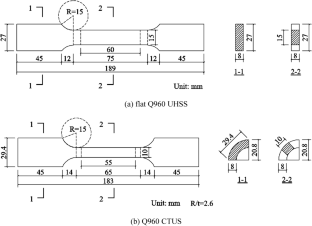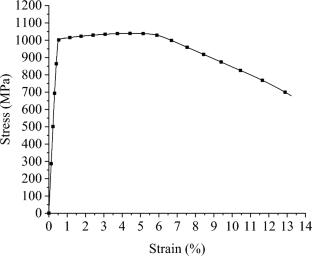Post-fire Mechanical Properties of Q960 Cold-Formed Thick-Walled Ultra-High-Strength Steel
Abstract
The mechanical properties and nonlinear performance of the Q960 cold-formed thick-walled ultra-high-strength steel (CTUS) after elevated temperatures were investigated experimentally, where the effects of cold-forming process, elevated temperature, and cooling condition were considered. Seven different elevated temperatures and two different cooling conditions were included in experiment, where a total of 45 coupon specimens were tested. The tensile coupon test was performed on the Q960 CTUS specimens to reveal the influences of the elevated temperature and cooling condition on the residual stress–strain properties. The predictive equations for the key mechanical parameters of the Q960 CTUS after elevated temperatures were proposed based on the experimental results. The mechanical properties of the Q960 CTUS after elevated temperatures were compared with those of different structural steels and reinforcing steels. A reliability analysis was performed to determine the accuracy of predictive equations for key mechanical parameters, where the resistance factor was recommended. A constitutive model was suggested to elucidate stress–strain curves of the Q960 CTUS after elevated temperatures. These research findings served as the foundation for the future numerical and theoretical investigations on the residual resistant performance of the Q960 CTUS structures after fire.



 求助内容:
求助内容: 应助结果提醒方式:
应助结果提醒方式:


